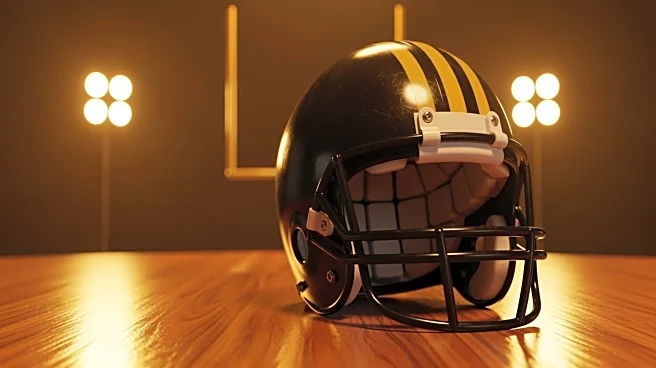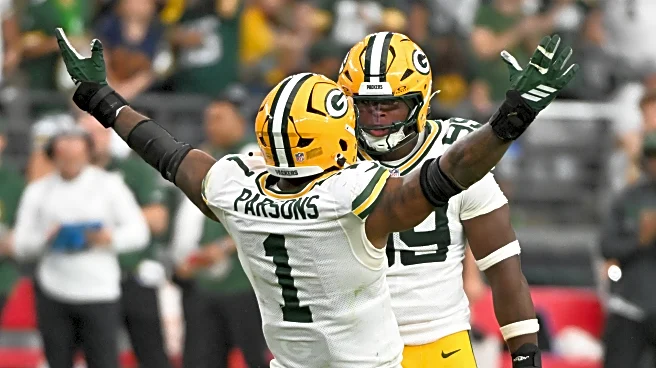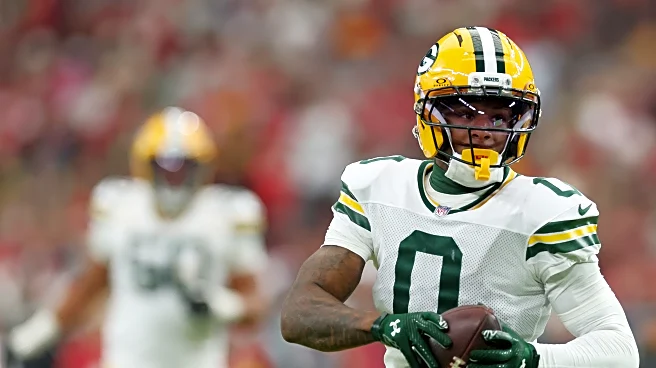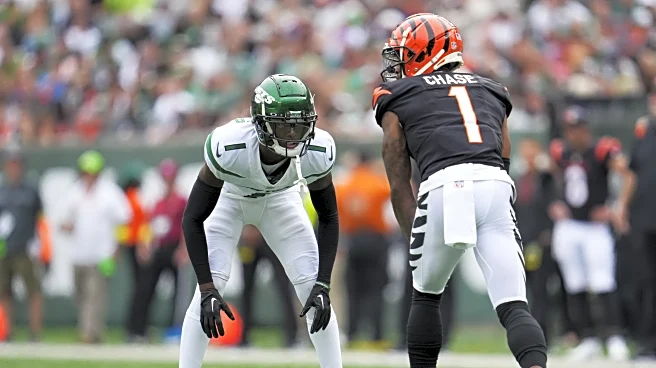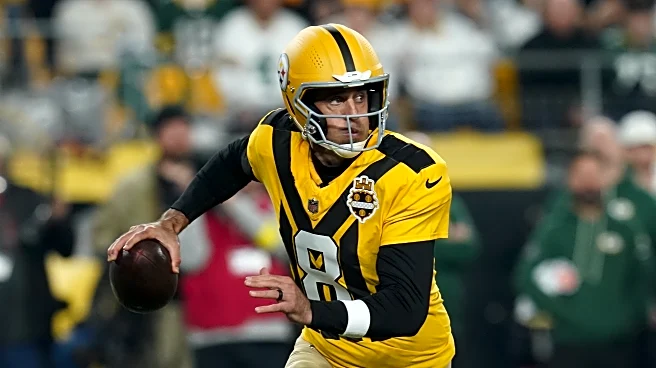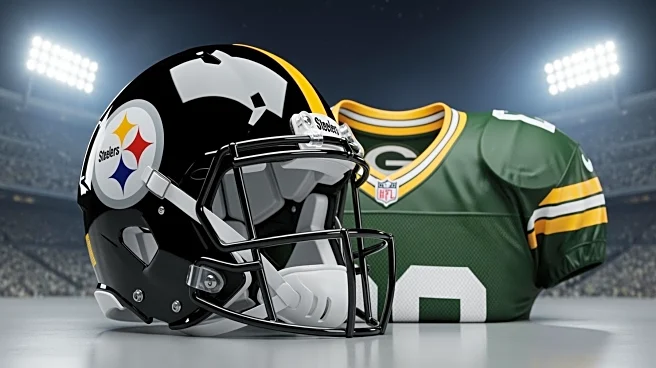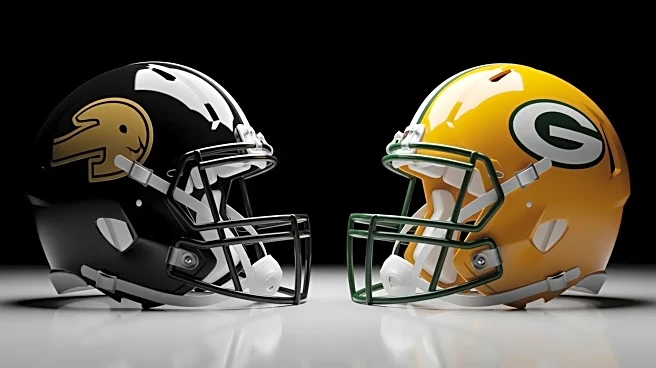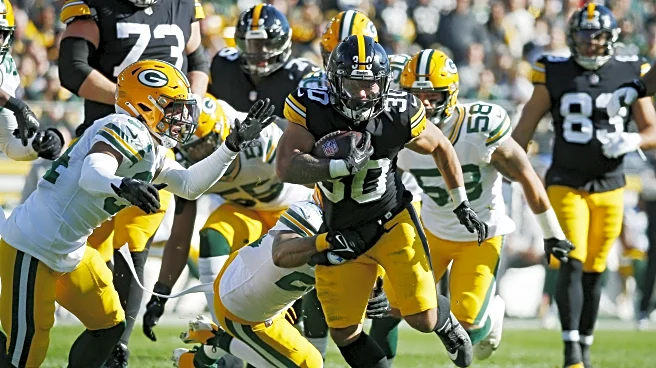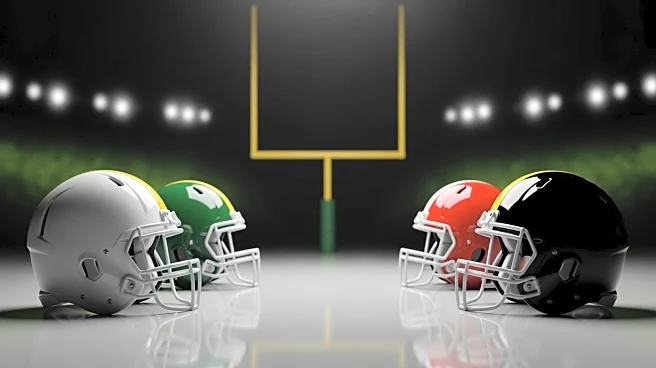What's Happening?
The Pittsburgh Steelers are set to debut their 1933 throwback uniforms during their Week 8 'Sunday Night Football' matchup against the Green Bay Packers. These uniforms feature a matte gold helmet with a single black stripe, a gray facemask, and a gold jersey
with black vertical lines, paying homage to the franchise's original uniforms. The ensemble is completed with beige pants, reminiscent of the 1933 khaki uniform. Steelers players, including Alex Highsmith and Pat Freiermuth, have expressed excitement about the new look, highlighting the helmet as a standout feature. The uniforms aim to honor the team's historical roots and connection to the city of Pittsburgh, with the city crest featured on the jersey.
Why It's Important?
The introduction of the 1933 throwback uniforms is significant as it reflects the Steelers' commitment to celebrating their rich history and tradition. By wearing these uniforms, the team not only pays tribute to its origins but also engages fans with a nostalgic experience. This move can enhance fan loyalty and generate excitement around the team's brand, potentially boosting merchandise sales and viewership for the game. The decision to debut these uniforms during a primetime game further amplifies their impact, as it provides a national platform for showcasing the team's heritage.
What's Next?
Following the debut of the throwback uniforms, the Steelers will likely assess fan and player reactions to determine the success of this initiative. Positive feedback could lead to more frequent use of throwback uniforms in future games, enhancing the team's brand identity. Additionally, the Steelers may explore other historical elements to incorporate into their uniforms, further strengthening their connection to Pittsburgh's cultural heritage. The team's performance in these uniforms could also influence their future use, as a strong showing might solidify their place in the Steelers' uniform rotation.
Beyond the Headlines
The Steelers' decision to wear throwback uniforms highlights the broader trend in sports of teams leveraging nostalgia to connect with fans. This approach taps into cultural and emotional ties, fostering a sense of community and shared history. It also raises questions about the balance between tradition and innovation in sports branding, as teams navigate the challenge of honoring their past while appealing to modern audiences. The Steelers' initiative may inspire other teams to explore similar strategies, potentially leading to a resurgence of historical elements in sports apparel.
